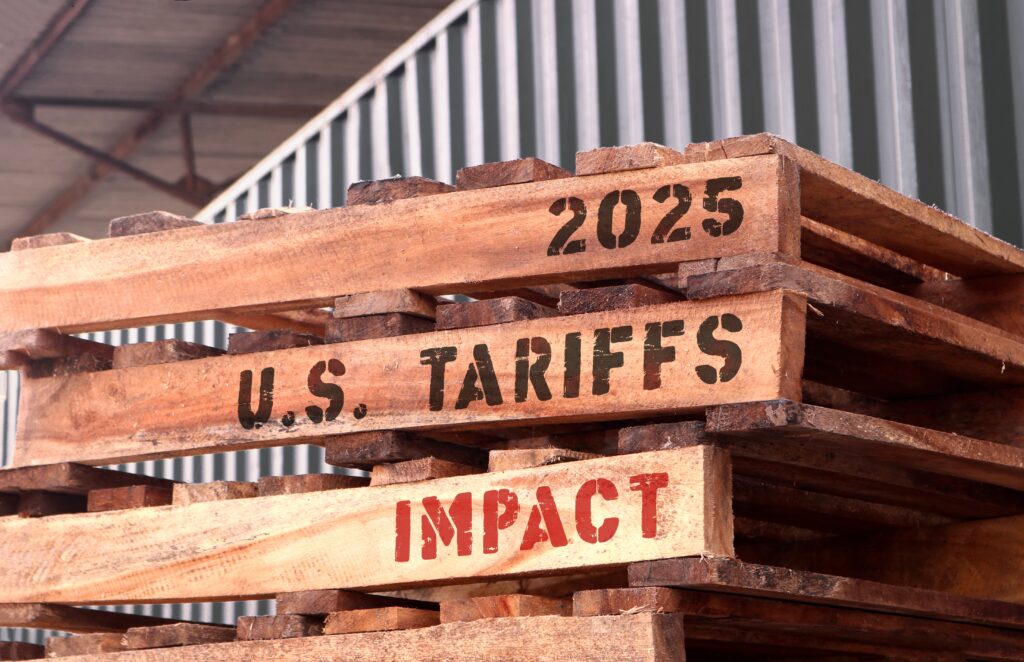President Donald Trump has taken a bold and unexpected step in U.S. trade policy by imposing steep new tariffs on several of America’s largest trading partners. The move sent shockwaves through global markets and raised fears of a new trade war.
Trump’s order matches about half the duties that foreign countries place on U.S. goods. The administration also factored in non-tariff barriers, such as value-added taxes (VAT), currency manipulation, product bans, and subsidies. These were added to the final tariff rates, making the impact even stronger.
Under this policy, China faces a 34% tariff, Japan 24%, and the European Union 20%. Canada and Mexico were excluded from the new duties due to existing agreements under the USMCA trade deal.
The sudden decision surprised investors and governments alike. Analysts say the move could reshape global trade flows, and some countries may respond with similar taxes on American goods.
Stocks Tumble After Announcement
Markets around the world reacted with swift and deep losses. U.S. futures took a dive right after Trump’s announcement, with the S&P 500 futures dropping more than 3%. It was the sharpest decline in nearly three years. Analysts blamed the panic on fears of higher costs for companies and rising tension between the U.S. and its allies.
In Europe, the drop was just as severe. The Euro STOXX 50 index fell 2.2%, led by losses in export-heavy firms. Shares of Adidas and Puma each dropped close to 10%, while eyewear maker EssilorLuxottica lost over 4%.
France’s CAC 40 was down 1.8%, pulled lower by banking and luxury stocks. Societe Generale, BNP Paribas, and Credit Agricole lost between 3.2% and 3.8%. Fashion giants like Kering, LVMH, and Hermès dropped by as much as 3.1%.
Italy’s FTSE MIB also shed 1.8%, with banks suffering the most. BPER Banca dropped 4.9%, UniCredit lost 4.1%, and Banco BPM fell 3.5%. Germany’s DAX index sank 1.4%, with Commerzbank losing 6.5%, Deutsche Bank 3.6%, and SAP 2.5%.
In Spain, the IBEX 35 dropped 1.5%. Local banks like CaixaBank, Santander, Sabadell, and Bankinter each fell more than 3%.
A Glimmer of Strength in Domestic Stocks
Despite the steep losses among exporters, some domestic-focused European companies saw slight gains. Investors seemed to believe that EU retaliation would hit U.S. exports harder, sparing local businesses.
Food and staple firms like Danone and Carrefour rose by up to 2%. Utilities also saw buying interest, with E.ON, Iberdrola, Enel, ENGIE, and A2A climbing between 1% and 2%. Telecom companies including Telefonica, Orange, Deutsche Telekom, Vodafone, and Swisscom also gained ground.
These gains were small compared to the losses, but they helped soften the blow to the overall European market.
Currencies Swing on Trade Uncertainty
The U.S. dollar weakened sharply as traders looked for safer investments. The euro rose 1.2% against the dollar to $1.0990, its highest level in six months. The British pound gained 1% to $1.3122. Against the Swiss franc, the dollar lost 1.5%, showing just how fast traders pulled away from U.S. assets.
Experts say the dollar could fall even more if other countries strike back with their own tariffs or make moves to hurt U.S. trade.
Bonds and Gold Become Safe Havens
As stocks tumbled and the dollar lost strength, investors rushed into bonds and gold. These are seen as safer choices during times of global tension.
Bond yields dropped across Europe as prices rose. Germany’s 10-year Bund yield fell six basis points to 2.65%. Spain’s 10-year bond yield fell to 3.30%, while Italy’s dropped to 3.78%.
Gold prices also shot up, reaching $3,167 (€2,911) per ounce before easing slightly. Though prices slipped 0.5% later in the day, the metal remains a favorite during unstable markets.
Oil Falls, Bitcoin Climbs
Energy prices dropped due to worries that trade wars could slow global growth and reduce fuel demand. U.S. crude oil, also called West Texas Intermediate, dropped 3.5% to under $70 (€64) per barrel. Brent crude, the global benchmark, slid 3% to $72 (€65).
Dutch natural gas prices also fell, slipping 2% to €40.2 per megawatt hour.
But in a surprising twist, Bitcoin moved in the opposite direction. The world’s largest cryptocurrency gained 1% to reach $83,368 (€76,030). Analysts say some investors see it as a hedge against global instability.
The Trump administration has not said whether more tariffs are planned. But with tensions rising, many are watching to see how China, Japan, and the EU respond.
The EU has already hinted at possible countermeasures. Officials in Brussels said they are reviewing U.S. actions and may file complaints with the World Trade Organization.
Investors are now bracing for a bumpy road ahead. Some worry that the world could be entering a new era of trade battles and economic division. Others believe the sharp action might force trade partners back to the table for talks.


